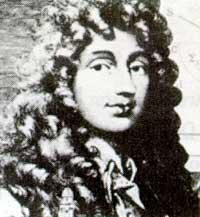Huygens in Christia
(1629-1695)
Born in the city of The Hague in 1629, he simultaneously studied astronomy, physics and mathematics. From a young age he showed a great tendency to science. In the family the scientific environment prevailed and as his brother's assistant began his first experiments. He used systematic observation as a method of research throughout his life, but his excellent theoretical basis allowed him to interpret the observed. Therefore, it is often said that he pioneered the current scientific spirit.
He studied at the Universities of Leiden and Breda. At first he excelled in mathematics but liked physics and astronomy and made his most important contributions in these fields.

In 1655, working on the telescope with his brother, he invented a new method for honing the lenses. In addition, he created lenses that prevent the aberration of color produced by the lenses and the combination of both inventions gave good results. The new lenses were immediately placed on the telescope, allowing it to make the most complete observations until then. He discovered the Titan satellite that revolves around Saturn and the ring that surrounds Saturn and the Orio nebula. Due to these discoveries, the average reached great fame among astronomers and all astronomers of the time considered him a master. Huygens formulated the first hypotheses about the position of the stars. He also discovered that stars are distant suns, surprising many scientists.
As mentioned above, he had a deep mathematical formation. In 1656 and under the title of De ratiociniis in ludo aleae published the first complete treatise on probability calculation. He dictated logarithmic theory and liberated the catenary problem.
He founded the wave theory of light in the field of physics. According to Huygens, light is a longitudinal wave that expands in the same direction as its movement. However, it failed to confirm this theory and XX. Until the 18th century it was not fully accepted. However, he continued to use this theory. Among other things, in his book Dioptrica he exposed optical phenomena through this theory.
He died in The Hague on June 8, 1695, without showing his correction.
Buletina
Bidali zure helbide elektronikoa eta jaso asteroko buletina zure sarrera-ontzian











